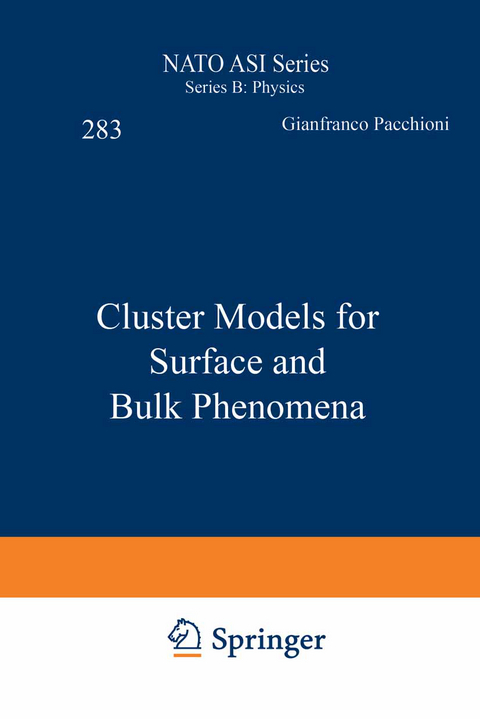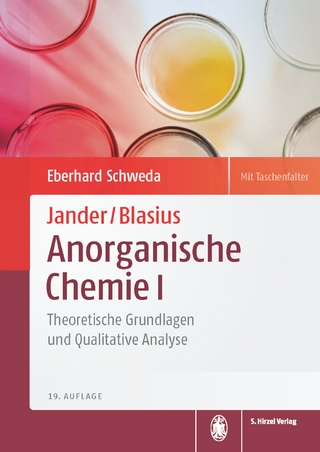
Cluster Models for Surface and Bulk Phenomena
Springer-Verlag New York Inc.
978-1-4684-6023-0 (ISBN)
Acronyms.- Properties of Gas-Phase Clusters.- Subshells, Shells and Supershells in Metal Clusters.- In Situ Observation of Surface Chemistry, Growth, and Nucleation of Ultrafine particles in Gas Suspension.- High Temperature Molecular Dynamics Studies of Cluster Growth and Polymer Degradation.- RPA Description of Optical Properties of Sodium Microclusters.- Thermionic Emission of Free Tantalum Clusters.- Stability and Energetics of Elemental Microclusters: Empirical Many-Body Potential Energy Function Calculations for BCC Elements.- Magnetic Properties of Free Iron and Cobalt Clusters.- Classical Molecular Dynamics Simulations of Small Metal Clusters.- Dynamics of Carbon Clusters: Buckminsterfullerene.- Organometallic, Supported Clusters and Film Growth.- Clustering of metals on Semiconductor Surfaces: Relation to Metallicity, Surface Diffusion, Growth Modes and Schottky Barriers.- Photoemission Studies of Supported Metal Clusters, the Early Years.- Metal Clusters and Particles as Catalyst Precursors and Catalysts.- Physical and Chemical Properties of High-Nuclearity Metal-Cluster Compounds: Model Systems for Small Metal Particles.- Photoelectron Spectroscopy Applied to Molecular Clusters and Surface Clusterization Processes.- Photoemission from Size-Selected Pt-Clusters Deposited on Silver Films.- Condensed Matter: Surface Processes.- Pauli Repulsion Effects in Scattering From and Catalysis by Surfaces.- Theory of Surface Clusters in External Fields: Influence of Multipole Embedding on Local Adsorbate Binding.- Theory of Core-Level Shifts of Clean and Covered Surfaces.- Ionic Bonding of Adsorbates on Surfaces: Theoretical Characterization and Observable Consequences.- Chemisorption on Metal Surfaces: Cluster Model Investigations Based on the LCGTO-LDF Method.- The Useof Cluster Model for the Calculation of Chemisorption Energetics.- Band and Cluster Models for Alkali-Semiconductor Surfaces.- Comments on the Cluster Approach to Chemisorption.- CO Chemisorption on Oxide Surfaces: Bonding and Vibrations.- Adsorption Sites on Pd(110): Bridge and On-Top CO.- Bonding of Metals to Si(111): A Study of Chemisorption.- Inverse Photoemission and Other Empty-State Techniques.- Electrochemical Contact Adsorption Site Changes Driven by Field and Charge: Fact and Theory.- Theoretical Studies of Surface Reactions on Metals: Cluster and Embedding Theory.- The Chemisorption Dynamics of Hydrogen on Metal Surfaces.- Quantum Chemical Molecular Statics Applied to Diffusion of Ad-Atoms on Aluminium Surface.- Partial Optimization of Adsorbates on Clusters: Oxygen on Al(111).- Ab Initio Calculations of Stationary Points on the PES and Determination of KIE for the Reaction of CO with Cu2O.- Chemisorption and Magnetism: Interaction of H, C, N, O, with Clusters Simulating the (100) Surface of Nickel.- Modeling Chemisorption Processes with Metal Clusters Systems. III. Model Thio-Alkils on Gold Surfaces..- Model Studies of Chemisorption on Platinum Surfaces.- Theoretical Study of ReH2.- Condensed Matter: Bulk Liquids and Solids.- X-Ray Photoelectron Spectroscopy of CuO and NiO Single Crystals.- Ab Initio Cluster Studies of La2CuO4.- Cluster Approaches to Solid State Problems: Necessary Complements to Band Structure Considerations.- Ab Initio Embedded-Cluster Models of Local Defects in Crystals.- Ab initio Studies on Zeolites and Related Catalysts.- Cluster Models for Condensed-Phase Electron Transfer Processes.- Beyond the Embedded-Cluster Approximation: an Ab Initio Treatment of Polarization Effects.- A Cluster Model of the Electronic Structure of Grain Boundaries with the Impurity Segregation and Particles Precipitation.- Luminescent Properties of CuLaO2 Oxide.- Cluster Simulations of Amorphous Silicon, With and Without and Impurity Boron Atom.- Quantum Mechanical Cluster Calculations of Solids: the Ab Initio Perturbed Ion Method.- Ab Initio Perturbed Ion Calculations on Oxo- and Fluoroperovskites.- Vibrational Properties of a Clustered Linear Atomic Chain with Substitutional Impurities.- Development of SINDO1 for Extended Systems.- Properties of Atoms and Chemical Nature of Bonds in Molecules, Clusters and Solids as Derived from a Topological Analysis of Theoretical or (and) Experimental Charge Densities.- LCAO Tight-Binding Calculation of the LDOS and STM Image.- Contributors Index.
| Reihe/Serie | NATO Science Series: B ; 283 |
|---|---|
| Zusatzinfo | 712 p. |
| Verlagsort | New York, NY |
| Sprache | englisch |
| Maße | 178 x 254 mm |
| Themenwelt | Naturwissenschaften ► Chemie ► Analytische Chemie |
| Naturwissenschaften ► Chemie ► Physikalische Chemie | |
| Naturwissenschaften ► Physik / Astronomie ► Atom- / Kern- / Molekularphysik | |
| Naturwissenschaften ► Physik / Astronomie ► Festkörperphysik | |
| Naturwissenschaften ► Physik / Astronomie ► Thermodynamik | |
| Technik ► Maschinenbau | |
| ISBN-10 | 1-4684-6023-4 / 1468460234 |
| ISBN-13 | 978-1-4684-6023-0 / 9781468460230 |
| Zustand | Neuware |
| Haben Sie eine Frage zum Produkt? |
aus dem Bereich


